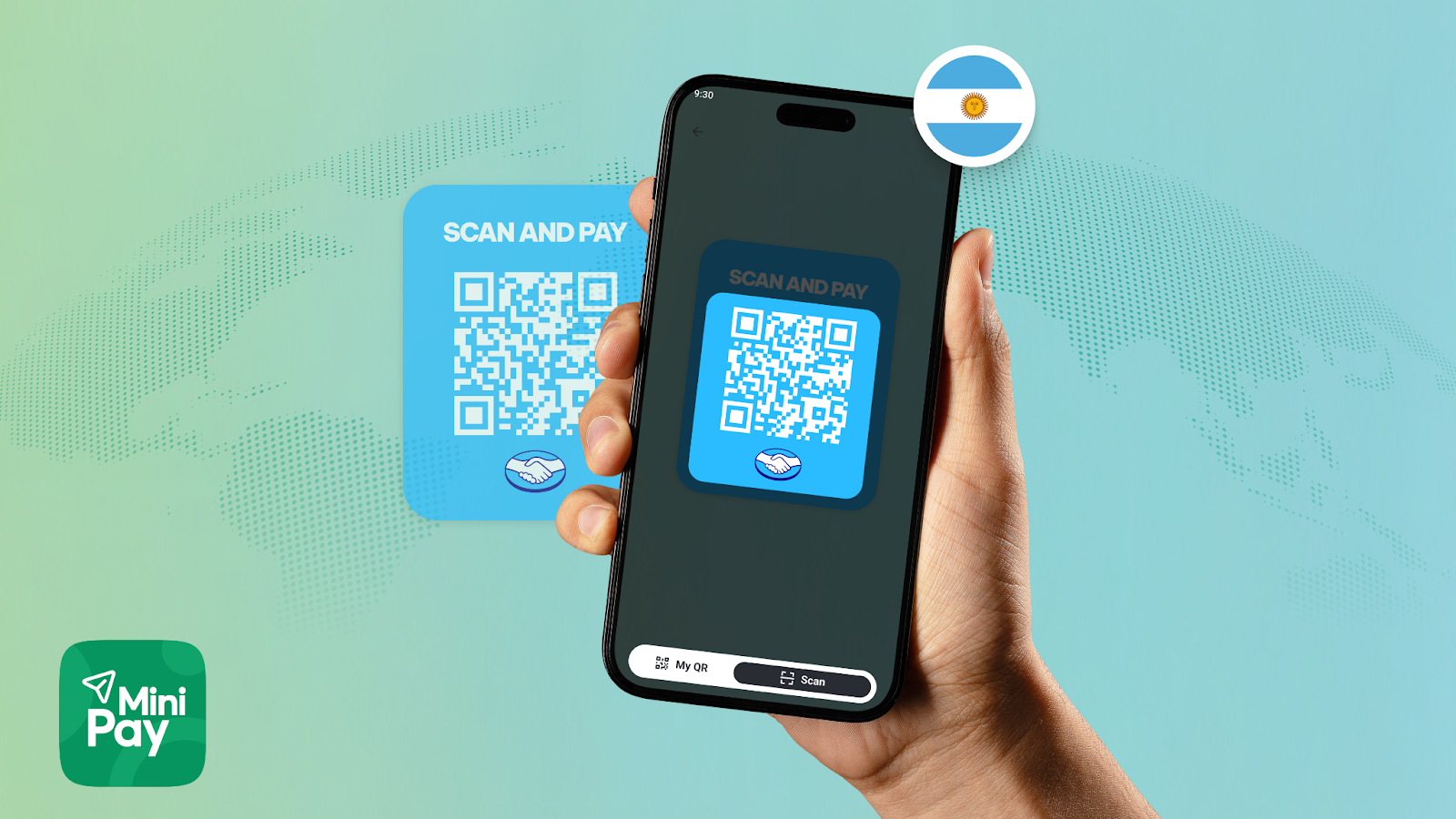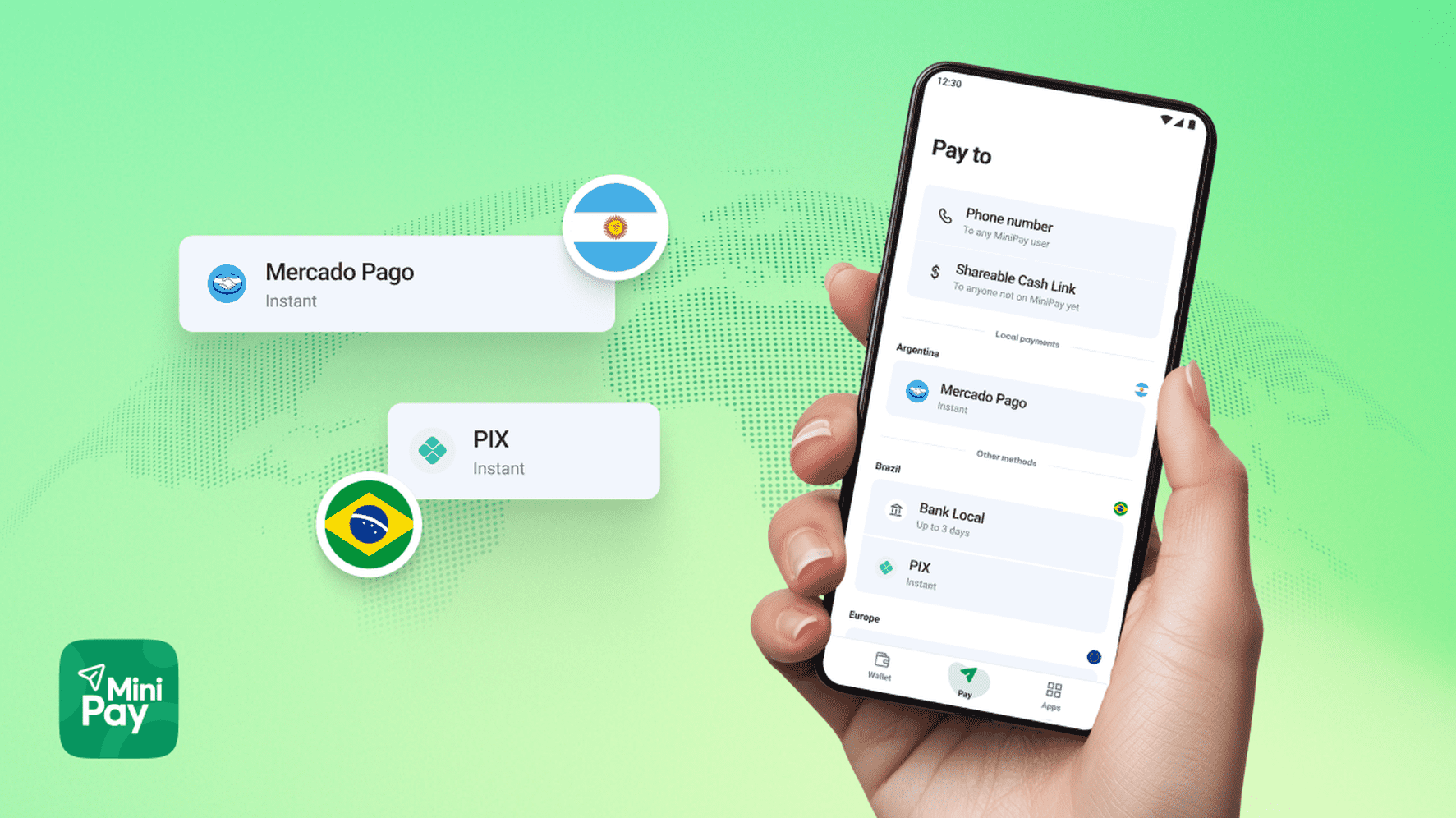Hi all, at Devconnect 2025 in Buenos Aires, we’re starting to roll out one of the most important evolutions in MiniPay so far: a way for you to spend your USD balance over the local payment rails that Latin America actually runs on.
This new experience lets you “Pay like a local,” and has now started rolling out for selected users and corridors, starting with support for PIX in Brazil and Mercado Pago in Argentina. Over time, we’ll expand access while adding more local methods and markets.
The direction is clear: MiniPay is moving from being a place where you simply store or send digital dollars to being a wallet that can plug directly into the real-world payment systems people use every day.
We are not changing how people in Latin America pay. We’re meeting them where they already are.
The rails that actually run the economy
To understand why this rollout matters, it’s worth looking at what “paying like a local” really means in Latin America today.
In Brazil, PIX has rapidly become the country’s financial backbone. Used by well over three quarters of the population and now handles more transactions than credit and debit cards combined, processing around 80% more payments than both card types together according to the Central Bank’s statistics. Street vendors, large retailers, freelancers, and professionals all rely on PIX. It’s not treated as an “alternative”; it is the default way to pay.
Argentina has taken a different path but arrived at a similar reality. Mercado Pago has grown into the dominant digital wallet in the country, with tens of millions of active users and the largest share of the local digital payments market. For many people, Mercado Pago is how they get paid, how they save, and how they accept payments for their businesses.
If you land in São Paulo or Buenos Aires today and ask how to pay, you’re unlikely to be handed a theory of “financial inclusion.” You’ll be asked for your PIX key or handed a Marcado Pago QR code.
Those are the rails MiniPay is now starting to connect to thanks to the integration with Noah.
From global balance to local reach
MiniPay’s role in this environment is straightforward: bridge a user’s stablecoin balance to the rails that local economies already trust.
In this first phase of the rollout, users will be able to initiate a direct payment to PIX in Brazil or Mercado Pago in Argentina directly from their MiniPay balance. They’ll enter an amount in Brazilian Real or Argentine Pesos, see a transparent quote in USD, and confirm the transfer. The local recipient simply receives funds into the method they already use: their PIX-linked account or Mercado Pago wallet.
The user does not need to open a local bank account, complete a separate onboarding journey with a local wallet, or handle cash. They simply use MiniPay as their interface to local life.
Stablecoins remain under the hood, doing what they are best at: providing a global, liquid, programmable dollar. The visible experience, however, is what matters most — the feeling that your global balance suddenly translates into the local economy.
{{CTA}}
Trust is the real differentiator

Much of the conversation around payments focuses on where a method is “accepted.” In practice, that’s only half the story. The other half is trust: what merchants prefer, what users default to, and what systems are culturally embedded in daily life.
Local rails like PIX and Mercado Pago have earned that trust. They move money instantly, they are integrated into everyday tools and interfaces, and they are familiar — not in a marketing sense, but in a behavioral one. People use them multiple times a day, often without thinking about “payments” as a separate category anymore.
When a global user enters that environment, they aren’t just looking for something that technically works. They are trying to plug into a network of trust that already exists between consumers, merchants, platforms, and institutions.
“Pay Like a Local” is MiniPay’s way of giving users that plug.
A different kind of wallet
This rollout is part of a broader product direction: making MiniPay a non-custodial, local-rail-aware wallet.
We’re not simply adding payout options on top of a crypto balance. We are building towards a model where:
- A single global balance can increasingly serve many different countries.
- Local payment methods feel native, not bolted on.
- Stablecoins act as the quiet infrastructure underneath, instead of being the entire story.
- Users who travel, work across borders, or get paid globally can interact with local economies in the way locals do.
Building on strong partnerships
As part of this effort, MiniPay is integrating with partners that are already deeply embedded in the region:
- El Dorado, leading P2P on and offramp partner in the region, which helps people convert local currency to USDt in minutes, move money instantly, and transact with transparent pricing and trusted counterparties in six different countries in the region like Brazil, Argentina, Colombia, Bolivia, Paraguay and Peru. Including Pix in Brazil, Bank transfer in Argentina, Llaves, Bancolombia and Nequi in Colombia, QR in Bolivia, Plin, BCP, Interbank in Perú.
- alfred strengthens coverage across key regional corridors with compliant liquidity and cash-in/cash-out options.
- Paytrie, a Canadian MSB registered with FINTRAC, connects Canada into this network, making cross-border flows between Canada, the U.S., and Latin America more straightforward.
Together, these partnerships help ensure that as we scale “Pay Like a Local,” we do so on a foundation designed to be as robust as the user experience is simple.
Stablecoins were always about global money.
Stablecoins have already proven that they can move value across borders faster than traditional infrastructure. The harder, more interesting question has always been: can they be
Global money is only as useful as its local reach.
We’re building MiniPay to close that gap.













